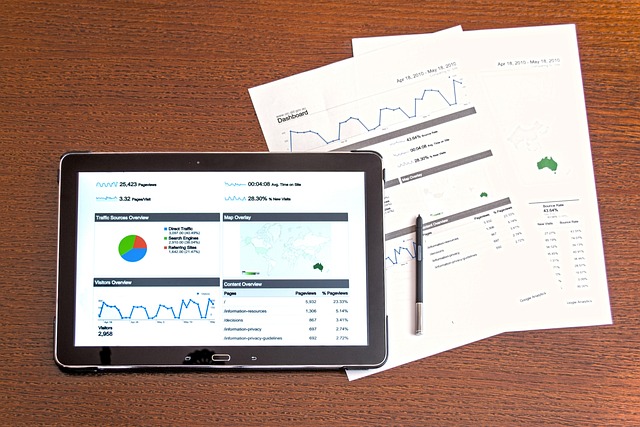Understanding Data Analytics
In the fast-paced world of e-commerce, businesses strive to stay ahead of the competition. One of the most effective ways to achieve this is through data analytics. So, what exactly is data analytics? At its core, data analytics refers to the process of collecting, interpreting, and utilizing data to make informed decisions. When applied to e-commerce, this powerful tool can provide insights that help increase sales, enhance customer experiences, and streamline operations.
Ultimately, data analytics allows you to understand consumer behavior better. It lets you uncover trends that might not be immediately obvious. For instance, you can analyze which products are popular over time, peak shopping hours, and even demographic details about your customers. This deep understanding goes a long way toward shaping your marketing strategies, inventory management, and customer service initiatives. The aim is to identify patterns that will lead you to enhance your operational capabilities and drive more sales through informed decision-making.
Gathering Valuable Data
The first step in any data analytics effort revolves around data collection. Depending on the size of your e-commerce business, you can gather extensive amounts of data from various sources. For instance, your website can collect user behavior data through tools like Google Analytics. This platform captures everything from page visits, click rates, to bounce rates. Additionally, transaction data comes into play once a customer makes a purchase. Not only does this track what items sell well, but it also provides insights into average transaction values and purchase frequencies. Collecting this data is essential for deriving actionable insights that promote e-commerce sales.
You shouldn’t ignore social media either. Platforms such as Facebook and Instagram provide analytics that reveal how potential customers interact with your brand. Are they clicking on your ads? How long are they engaging with your content? This information can shape your marketing efforts and guide your advertising budget. The golden rule here is to gather data from diverse channels. This holistic view can offer a comprehensive understanding of your customers’ journey and their interactions with your brand.
Analyzing Customer Behavior
Now that you’ve collected data, it’s time to delve into analysis. Understanding customer behavior can open doors to strategic decisions that can boost your bottom line. This step is crucial because it helps you figure out who your customers are and what they truly want. By segmenting customers based on various attributes like purchase history, browsing habits, and demographic factors, you can tailor your marketing messages. For example, personalized emails can significantly boost conversion rates. If you determine that a customer has been browsing a particular product repeatedly, sending a targeted email could encourage them to make a purchase.
Moreover, analyzing behavior can help identify bottlenecks in the shopping process. Are there specific pages where customers frequently drop off? Identifying these pain points allows you to make necessary adjustments. It could be as simple as improving page load times or as complex as rethinking your checkout process. When customers have a smoother, more enjoyable shopping experience, they are much more likely to convert. Diving into customer behavior analysis equips you with the knowledge to make these crucial optimizations.
Optimizing Your Online Store
Once you’ve gathered and analyzed the data, the next logical step is online store optimization. A well-optimized website is essential for driving sales. Start by simplifying navigation. Users should find what they’re looking for quickly. Complicated menus and convoluted pathways lead to frustration, and frustrated customers do not convert. Effective categorization of products helps consumers find what they need faster, improving the overall shopping experience.
Another aspect of optimization involves mobile responsiveness. With an ever-increasing number of users shopping via smartphones, ensuring your online store is mobile-friendly can drastically boost sales. Consider that over half of all e-commerce traffic now comes from mobile devices. If your site doesn’t perform well on smaller screens, you’ll lose a significant segment of potential customers. Evaluate your website’s design and functionality across various devices to ensure a seamless experience no matter the platform.
Implementing A/B Testing
A/B testing is an excellent technique to optimize various elements of your e-commerce site based on data-driven decisions. Essentially, it involves comparing two versions of a webpage to see which performs better. You can test things like call-to-action buttons, product images, or even the wording of your checkout prompts. Analyzing the performance difference between these versions can lead you to insights you hadn’t considered before.
Say you have two versions of a product page, one featuring multiple product images and another with a single image. By randomly showing these pages to different users, you can gather data about which layout leads to higher conversion rates. Small changes can make a significant difference, so embrace A/B testing. It allows for continuous improvement based on real-user interactions, leading to increased e-commerce sales over time.
Harnessing Predictive Analytics
As e-commerce continues to evolve, predictive analytics stands out as a powerful tool for businesses eager to leverage data effectively. Predictive analytics utilizes historical data along with statistical algorithms to forecast future events. For example, by examining past sales trends, you can predict which products are likely to be popular in the upcoming season. This forecasting can ensure you stock adequately to meet demand, preventing stockouts or overstock scenarios.
Furthermore, predictive analytics can enhance your marketing efforts. By analyzing customer behaviors, you can determine which segments are most likely to respond to certain promotions or products. This knowledge allows for targeted marketing campaigns, making your advertising spend much more efficient. When you target the right audience with the right message at the right time, you maximize your chances of conversion, leading to improved sales performance.
Utilizing Customer Feedback
No discussion about utilizing data analytics for boosting sales would be complete without mentioning customer feedback. Actively seeking input from your customers can provide valuable insights that numbers alone cannot convey. Surveys, reviews, and social media comments help you understand how customers perceive your products and overall shopping experience. This information is invaluable. Positive feedback can inform marketing strategies, while negative feedback highlights areas that need improvement.
Consider implementing a structured feedback loop. Encourage customers to review their purchases and share their experiences. Collecting this information is essential, but you also need to act on it. If customers consistently report issues with a specific product, it’s time to address it. This responsiveness not only improves your product offerings but also fosters customer loyalty. When customers see that you value their opinions, they are more likely to return. They trust a brand that actively engages with their feedback.
Measuring Your Success
All the data collection and analysis wouldn’t matter much without measuring your e-commerce success. Analyzing key performance indicators (KPIs) will allow you to determine how well your strategies are working. Some vital KPIs to monitor include conversion rates, cart abandonment rates, and customer lifetime value (CLV). By keeping an eye on these metrics, you can identify trends over time that can inform future strategies.
For instance, if you notice an uptrend in your conversion rates after making website optimizations, you can confidently continue along this path and analyze what specifically led to this success. On the flip side, if you see a spike in cart abandonment, that signals a need for immediate investigation. Perhaps there’s an issue in the checkout process, or maybe users discover unexpected costs. Understanding these metrics equips you with the knowledge you need to address problems proactively.
The Importance of Continuous Improvement
Finally, it’s crucial to understand that data analytics is not a one-time endeavor. It requires commitment to continuous improvement. The e-commerce environment is always changing; consumer preferences shift, technology advances, and new competitors emerge. Therefore, your use of data analytics should evolve as well. Regularly revisit your data, refine your strategies based on new insights, and strive for improvement. The best e-commerce businesses never rest on their laurels; they continually analyze, adjust, and optimize. This growth mindset is what sets the industry leaders apart and can lead to sustained success.
Frequently Asked Questions
- What types of data should I collect for e-commerce analytics?
- Focus on user behavior data, purchase history, demographic information, and social media engagement metrics to build a comprehensive picture.
- How can data analytics improve customer experience?
- Data analytics helps understand customer preferences and behaviors, enabling personalized experiences that lead to improved satisfaction and loyalty.
- What is the role of A/B testing in e-commerce?
- A/B testing allows you to compare two versions of a webpage or element to determine which performs better, helping refine your online strategies.
- How does predictive analytics benefit e-commerce?
- Predictive analytics forecasts future sales trends and customer behaviors, helping businesses adjust inventory and marketing efforts accordingly.
- Why is customer feedback important in e-commerce?
- Customer feedback provides qualitative insights that complement quantitative data, helping identify strengths and areas for improvement in your offerings.



